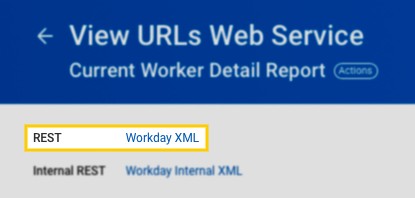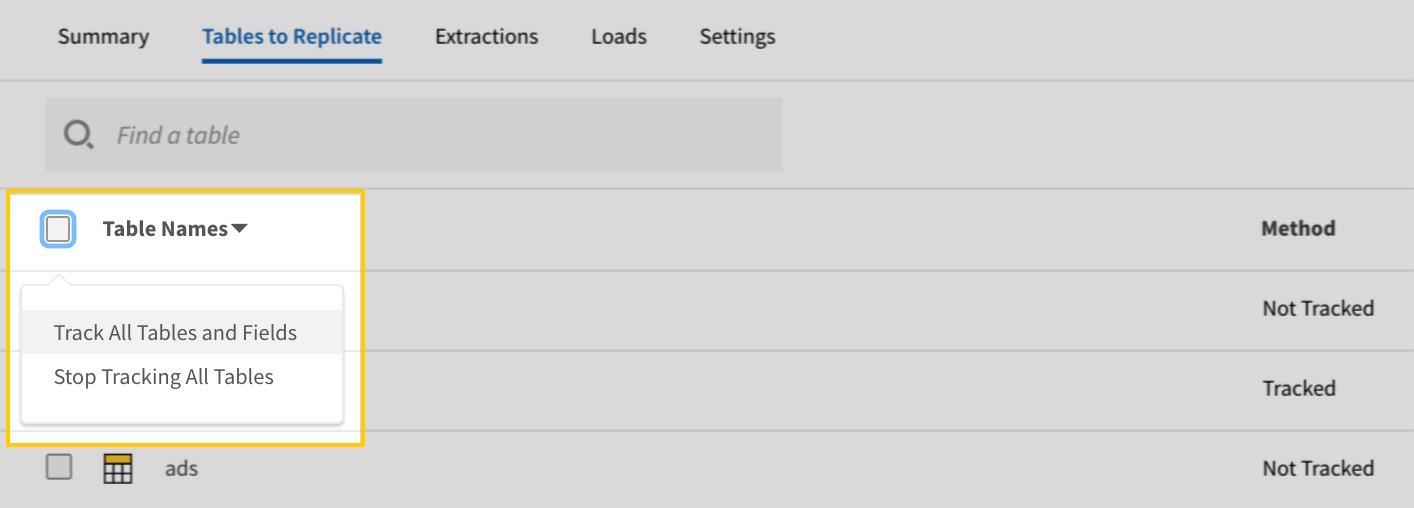Workday RaaS integrations are an upgraded feature
Workday RaaS integrations are an upgraded feature that’s available during the free trial or for customers on an Advanced or Premium plan.
For more info about Stitch Advanced, contact the Stitch Sales team.
This integration is powered by Singer's Workday RaaS tap and certified by Stitch. Check out and contribute to the repo on GitHub.
For support, contact Support.
Workday RaaS integration summary
Stitch’s Workday RaaS integration replicates data from your defined reports using the Workday RaaS Public Web Services API. For more information on this integration’s table creation, refer to the Schema section.
Workday RaaS feature snapshot
A high-level look at Stitch's Workday RaaS (v1) integration, including release status, useful links, and the features supported in Stitch.
| STITCH | |||
| Release status |
Released on March 9, 2020 |
Supported by | |
| Stitch plan |
Advanced |
API availability |
Available |
| Singer GitHub repository | |||
| REPLICATION SETTINGS | |||
| Anchor Scheduling |
Supported |
Advanced Scheduling |
Supported |
| Table-level reset |
Unsupported |
Configurable Replication Methods |
Unsupported |
| DATA SELECTION | |||
| Table selection |
Supported |
Column selection |
Supported |
| Select all |
Supported |
||
| TRANSPARENCY | |||
| Extraction Logs |
Supported |
Loading Reports |
Supported |
Connecting Workday RaaS
Workday RaaS setup requirements
To set up Workday RaaS in Stitch, you need:
- A Stitch Advanced plan.
Step 1: Retrieve your report URL
- Login to your Workday RaaS account.
- Navigate to your reports.
- Select the report you want to replicate and ensure that the Enable As Web Service box is checked.
-
Copy the Workday XML REST link and keep it available for the next step.

To replicate multiple reports, repeat steps 3 and 4 as needed.
Step 2: Add Workday RaaS as a Stitch data source
- Sign into your Stitch account.
-
On the Stitch Dashboard page, click the Add Integration button.
-
Click the Workday RaaS icon.
-
Enter a name for the integration. This is the name that will display on the Stitch Dashboard for the integration; it’ll also be used to create the schema in your destination.
For example, the name “Stitch Workday RaaS” would create a schema called
stitch_workday_raasin the destination. Note: Schema names cannot be changed after you save the integration. - In the Username field, enter the username for your Workday RaaS account.
- In the Password field, enter the password for your Workday RaaS account.
- In the Report Name field, enter a name for the report. Note: This will be used to create the name of the corresponding destination table.
- In the Report URL field, enter the report URL you obtained in step 1.
To replicate additional reports, click Configure another report and repeat steps 6 and 7.
Step 3: Define the historical replication start date
The Sync Historical Data setting defines the starting date for your Workday RaaS integration. This means that data equal to or newer than this date will be replicated to your data warehouse.
Change this setting if you want to replicate data beyond Workday RaaS’s default setting of 1 year. For a detailed look at historical replication jobs, check out the Syncing Historical SaaS Data guide.
Step 4: Create a replication schedule
In the Replication Frequency section, you’ll create the integration’s replication schedule. An integration’s replication schedule determines how often Stitch runs a replication job, and the time that job begins.
Workday RaaS integrations support the following replication scheduling methods:
-
Advanced Scheduling using Cron (Advanced or Premium plans only)
To keep your row usage low, consider setting the integration to replicate less frequently. See the Understanding and Reducing Your Row Usage guide for tips on reducing your usage.
Step 5: Set objects to replicate
The last step is to select the tables and columns you want to replicate. Learn about the available tables for this integration.
Note: If a replication job is currently in progress, new selections won’t be used until the next job starts.
For Workday RaaS integrations, you can select:
-
Individual tables and columns
-
All tables and columns
Click the tabs to view instructions for each selection method.
- In the integration’s Tables to Replicate tab, locate a table you want to replicate.
-
To track a table, click the checkbox next to the table’s name. A blue checkmark means the table is set to replicate.
-
To track a column, click the checkbox next to the column’s name. A blue checkmark means the column is set to replicate.
- Repeat this process for all the tables and columns you want to replicate.
- When finished, click the Finalize Your Selections button at the bottom of the screen to save your selections.
- Click into the integration from the Stitch Dashboard page.
-
Click the Tables to Replicate tab.
- In the list of tables, click the box next to the Table Names column.
-
In the menu that displays, click Track all Tables and Fields:

- Click the Finalize Your Selections button at the bottom of the page to save your data selections.
Initial and historical replication jobs
After you finish setting up Workday RaaS, its Sync Status may show as Pending on either the Stitch Dashboard or in the Integration Details page.
For a new integration, a Pending status indicates that Stitch is in the process of scheduling the initial replication job for the integration. This may take some time to complete.
Initial replication jobs with Anchor Scheduling
If using Anchor Scheduling, an initial replication job may not kick off immediately. This depends on the selected Replication Frequency and Anchor Time. Refer to the Anchor Scheduling documentation for more information.
Free historical data loads
The first seven days of replication, beginning when data is first replicated, are free. Rows replicated from the new integration during this time won’t count towards your quota. Stitch offers this as a way of testing new integrations, measuring usage, and ensuring historical data volumes don’t quickly consume your quota.
Workday RaaS replication
Stitch uses Full Table Replication to replicate report data from Workday RaaS. This means that during every replication job, every report configured in the integration’s settings will be replicated in full.
Workday RaaS table reference
Schemas and versioning
Schemas and naming conventions can change from version to version, so we recommend verifying your integration’s version before continuing.
The schema and info displayed below is for version 1 of this integration.
This is the latest version of the Workday RaaS integration.
Stitch’s Workday RaaS integration replicates data from existing reports in your Workday RaaS account. For every report you configure while setting up the integration, Stitch will create a corresponding table in your destination.
The fields available for selection are dependent on the data points that exist in the report in Workday RaaS. If you don’t see a field you want to select in Stitch, verify that the report in Workday RaaS contains the field.
| Related | Troubleshooting |
Questions? Feedback?
Did this article help? If you have questions or feedback, feel free to submit a pull request with your suggestions, open an issue on GitHub, or reach out to us.